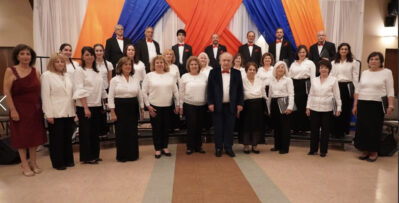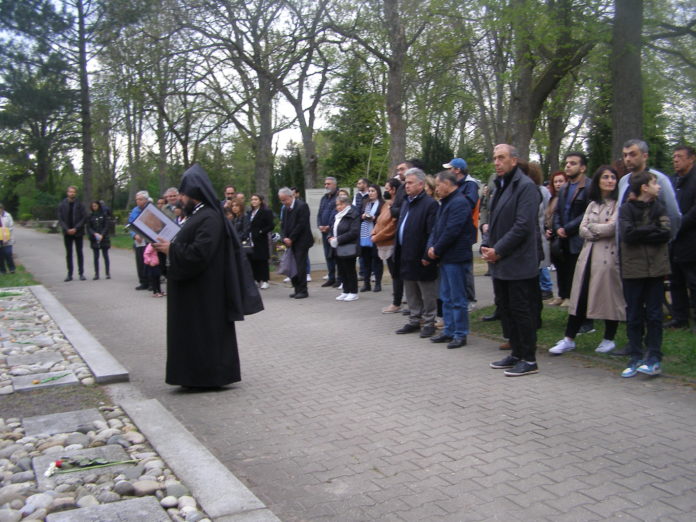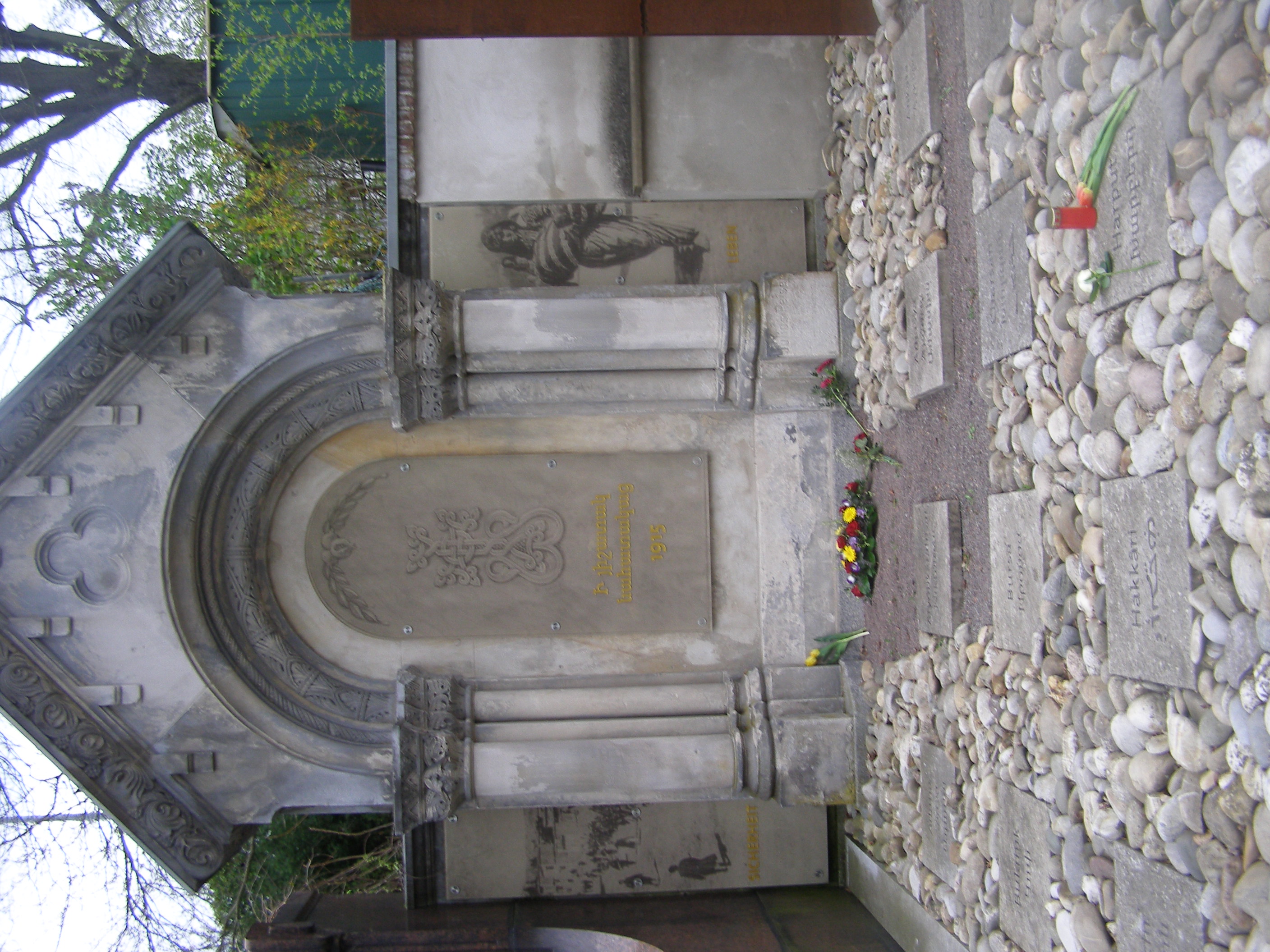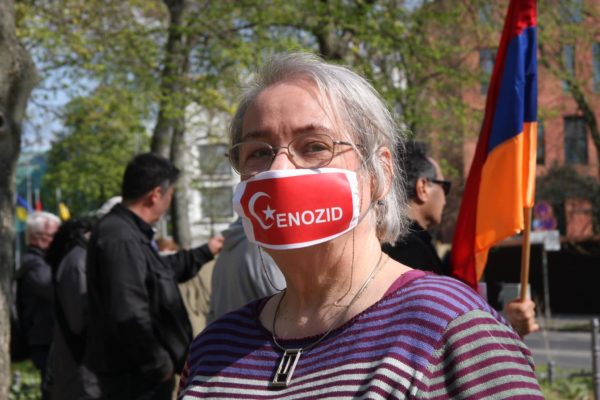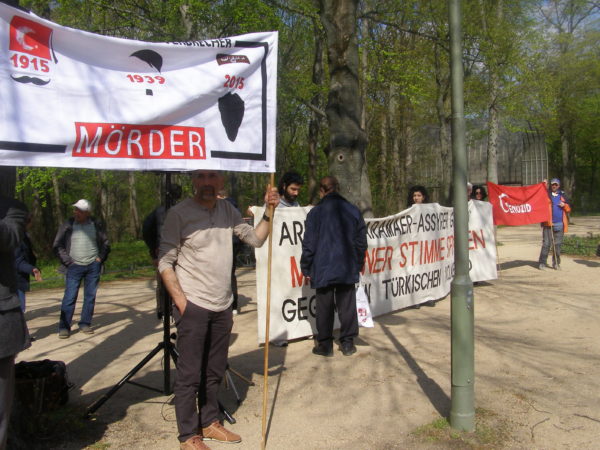FRANKFURT — Every year Armenians in Germany gather on April 24 to commemorate the victims of the genocide. Many cities host events, Berlin and Frankfurt in particular. This year, with the war in Ukraine and renewed aggression in Artsakh, they were shrouded in a mood both somber and political. The central official gathering with participation of Armenian Ambassador Viktor Yengibaryan, guest speaker historian Dr. Hans-Lukas Kieser, leading regional and local elected officials, and Bishop Serovpé Isakhanyan, Primate of the Diocese of the Armenian Church, took place in Frankfurt.
In Berlin, two events marked the anniversary. On April 23, the Working Group for Recognition – Against Genocide, for Understanding among Peoples (AGA), held a vigil in front of the Turkish Embassy in Berlin. In a gathering that the AGA says has “unfortunately become traditional,” the 40 or so participants reiterated their demand for Turkish recognition of the genocide and assumption of responsibility for its history. AGA founding member Gerayer Koutcharian opened his remarks at the vigil with the Hayr Mer, something, he said, that perhaps might raise questions. He then read out the names of 24 Armenian intellectuals, artists, journalists, writers, parliamentarians and clergymen, who were deported, killed and lie in unknown graves; they were the first in an “Elitocide,” almost unique in human history.
A Religiously Motivated Genocide
This, “the greatest persecution of Christians in human history,” he said, “did not take place in Rome under Emperor Nero, but in Turkey in 1915.” Among the more than 5 million Christians who were murdered or deported were “Armenians, Greeks in Pontos, in Asia Minor and Thrace, Aramaeans/Assyrians/Chaldeans, Christian Arabs, Armenian Roma and also Yazidis.” Gerayan focused on this aspect of the genocide. It was religiously motivated, he said, and the Elitocide targeted “the clergy of the Armenian-Apostolic, Armenian-Catholic or Uniate Christians as well as the Protestant Armenians. Of the 5,500 Armenian priests and pastors of various denominations, there were only about 52 still alive at the end of the First World War.”
Koutcharian said 2,250 Armenian religious edifices, churches, monasteries, chapels that were turned into mosques and said the devastation continues today, as so-called treasure hunters ravage such buildings in search of buried wealth. He noted: “How cynical is this pretext for destruction? Do Turks perhaps hide money or gold in mosques?”
It was not only the Armenian but also other Christian communities whose monuments were destroyed; here too he gave figures: “2.5 million Greeks lived around 1915 in the Ottoman Empire, with 2,300 schools and 200,000 pupils… 2,000 Greek Orthodox edifices, and over 3,000 clergy.“ By contrast now there are fewer than a thousand in what was once the Greek Byzantine capital Constantinople. Koutcharian noted in this context the transformation last year of the Hagia Sophia in a mosque “under the eyes of the whole world.” The tragedy continued, eliminating a half million Assyrians and Chaldeans, devastating their holy places.
